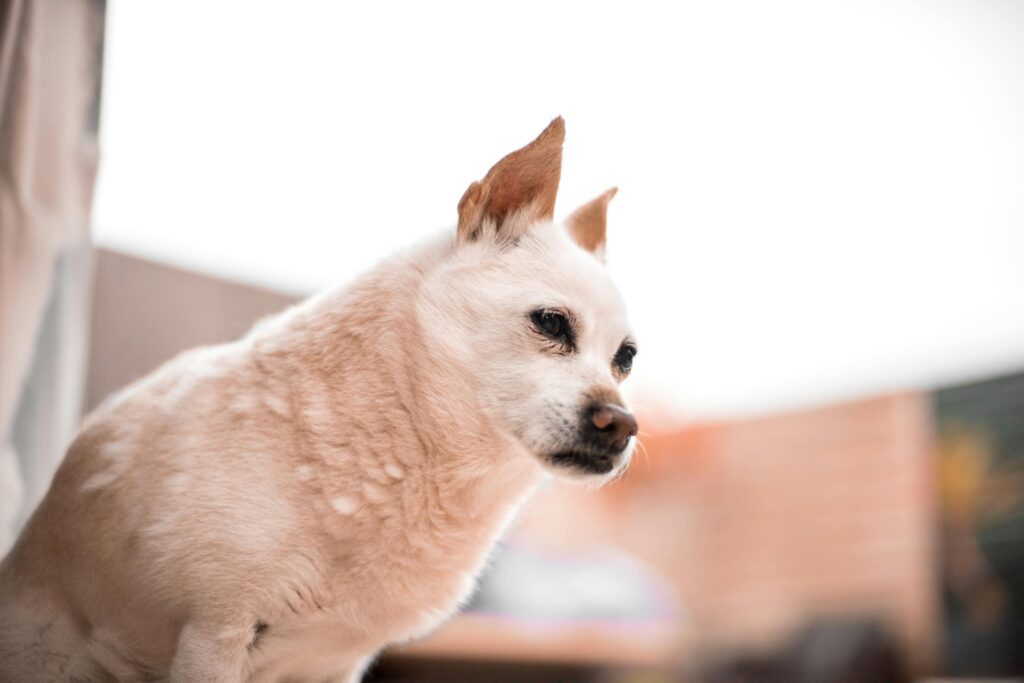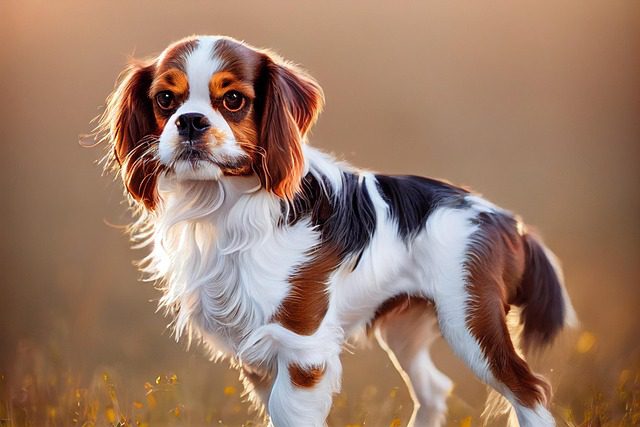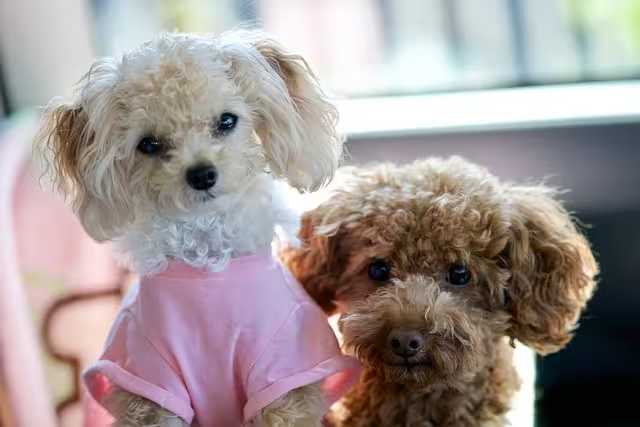Drawing dogs is a skill that improves with practice and dedication· Whether you’re a novice artist or have some experience under your belt, there are countless ways to continue developing your abilities in dog drawing· The journey of refining your artistic skills is both rewarding and enjoyable, and the following strategies can help you elevate your craft·
1· DAILY SKETCHING: BUILDING CONSISTENCY
One of the most effective ways to enhance your dog drawing skills is to incorporate daily sketching into your routine· Set aside time each day to draw, even if it’s just for a short period·
A· Exploring Different Breeds
Challenge yourself to draw various dog breeds· Each breed has unique physical characteristics and expressions that require different approaches· By sketching breeds like Golden Retrievers, Dachshunds, or Bulldogs, you’ll gain insights into their specific anatomy and features, which will improve your overall understanding of dog drawing·
B· Quick Gesture Sketches
In addition to detailed studies, practice quick gesture sketches· These are fast, loose drawings that capture the essence of a dog’s movement or posture· Spend a few minutes observing and sketching dogs in action, whether they are running, playing, or resting· This practice will help you develop speed and accuracy, allowing you to convey the dynamic nature of your subjects·
2· EXPERIMENTING WITH MEDIUMS: DISCOVERING NEW STYLES
As an artist, exploring different mediums is essential for growth· Don’t hesitate to step outside your comfort zone and try new tools and materials·
A· Diverse Tools and Techniques
Experiment with colored pencils, ink, charcoal, or digital tools to find what resonates with you· Each medium offers unique textures and effects, allowing you to express your creativity in different ways· For instance, colored pencils can bring vibrancy to your dog drawings, while ink can create bold and striking contrasts·
B· Combining Techniques
Feel free to combine different techniques within your dog drawing· Blending traditional mediums with digital enhancements can yield exciting results· By mixing various styles, you can create a signature look that reflects your artistic voice·
3· JOINING ART COMMUNITIES: LEARNING FROM OTHERS
Connecting with fellow artists is a fantastic way to grow and improve your dog drawing skills· Joining art communities—whether online or in-person—provides opportunities for sharing your work and receiving constructive feedback·
A· Sharing and Receiving Feedback
Platforms such as social media, art forums, or dedicated art websites allow you to showcase your dog drawings and connect with other artists· Sharing your work can lead to valuable critiques that help you identify areas for improvement and refine your skills·
B· Engaging in Challenges
Many art communities host drawing challenges focused on specific themes, including dog drawing· Participating in these challenges can motivate you to create more frequently and push your creative boundaries· Engaging with others in these challenges fosters a sense of community and accountability in your artistic journey·
4· USING REAL-LIFE REFERENCES: OBSERVATION IS KEY
Observation is essential for capturing the nuances of dog drawing· Observing live dogs or studying photographs can significantly enhance your understanding of canine anatomy and movement·
A· Observing in Real Life
Spend time around dogs, whether they belong to friends, family, or at local parks· Take note of their anatomy, expressions, and overall behavior· Real-life observation allows you to appreciate their unique characteristics and translate that understanding into your drawings·
B· Analyzing Photographs
If you can’t access real dogs, high-quality photographs make excellent references for your dog drawing· Look for images that showcase different breeds, angles, and actions· Analyzing these references will help you grasp the details that make each dog unique, enhancing the accuracy of your artwork·
5· EMBRACING YOUR UNIQUE STYLE
Every artist has their distinct style, and dog drawing is no exception· Don’t be afraid to experiment and develop your unique approach·
A· Allowing Your Creativity to Shine
As you practice and explore, embrace the quirks and characteristics that set your work apart· Whether you prefer realism or stylization, allow your individuality to shine in your dog drawings·
B· Staying Open to Change
Remember that your style may evolve over time· Embrace the changes and growth in your artistic journey· As you gain more experience, you may find yourself drawn to new techniques, styles, or subject matter·
Choosing Your Style and Medium
Before you begin your journey into the world of dog drawing, it’s crucial to decide on the style and medium you wish to utilize· Different artistic approaches evoke varied moods and levels of detail, influencing the final outcome of your artwork·
Realistic drawings emphasize precise proportions, fur texture, and shading, making them ideal for mediums such as graphite pencils, charcoal, or colored pencils· Conversely, cartoon or stylized dogs rely on simplified shapes and exaggerated features to create fun and expressive representations, which work beautifully with ink, markers, or digital illustration· If you’re aiming for a more energetic and dynamic look, consider abstract or loose sketching, which employs bold strokes and minimal details, often achieved with watercolors or pastels· While this guide will focus on creating a realistic pencil drawing, you can easily adapt these steps to suit any style you prefer·
STEP 1: START WITH BASIC SHAPES
Every successful dog drawing begins with simple shapes· This foundational step is essential for constructing the head and body of your dog accurately· Start by drawing an oval to represent the head· Next, add a circle or rectangle for the snout, depending on the breed you are drawing· For the ears, sketch two triangles or rounded shapes, again taking into account the specific breed characteristics·
For the body, use a larger oval or egg shape· Lightly map out the legs using straight lines and circles for the joints· Keeping your pencil strokes light at this stage allows for easy adjustments as you refine your dog drawing· This initial framework is vital as it provides the structure upon which you will build the details of your artwork·
STEP 2: REFINE THE OUTLINE
Once you have established the basic structure, it’s time to refine the dog’s features· Start by sketching the eyes; make sure they are aligned symmetrically, as they play a crucial role in capturing the dog’s expression· Next, outline the snout and nose, adding nostrils and slight curves to give them dimension·
Pay close attention to the shape of the ears—whether they are floppy, pointy, or folded—and draw them accordingly· Then, refine the body shape by adjusting the curves of the legs and tail to create a more natural look· To improve accuracy, use reference photos or observe real dogs; these resources will help you capture the details and proportions more effectively·
STEP 3: ADD DETAILS AND FUR TEXTURE
Dogs come in a variety of fur textures, and capturing these nuances is vital for a realistic dog drawing· For short fur, use light, short strokes that follow the direction of hair growth· For longer fur, opt for longer, flowing strokes with varying pressure to create a sense of movement and depth·
When depicting curly fur, use small, circular motions to achieve a wavy effect· Regardless of the texture, it’s important to ensure that the fur follows the contours of the dog’s body; this attention to detail enhances the overall realism of your drawing· Remember, the more accurately you depict the fur, the more lifelike your dog drawing will become·
STEP 4: SHADING AND DEPTH
To elevate your dog drawing and make it lifelike, begin by identifying the light source· Shading accordingly helps create depth and dimension· Utilize techniques such as hatching and cross-hatching to build shadows and add texture· For smoother shading, blend lightly with a tissue or blending stump to soften the transitions between light and dark areas·
Finally, darken the regions around the eyes, nose, and ears to add contrast· This contrast emphasizes these key features and brings your dog drawing to life, making it more engaging and realistic·
STEP 5: CAPTURE EXPRESSION AND PERSONALITY
Every dog has a unique expression that reflects its personality, and capturing these details is essential to enlivening your drawing· Pay special attention to the eyes; adding highlights will create depth and a sense of liveliness· Position the ears and mouth to reflect the dog’s mood—perked ears can convey alertness, while a relaxed mouth suggests calmness·
To enhance realism, consider including whiskers and subtle facial wrinkles· These small details can make a significant difference in capturing the dog’s personality and expression, ultimately bringing warmth and character to your dog drawing·
STEP 6: EXPERIMENT WITH BREEDS AND POSES
Once you’re comfortable with the basics of dog drawing, challenge yourself by exploring different breeds and poses· For breeds like bulldogs and pugs, focus on rendering their wrinkled skin and short snouts in your drawings· When illustrating Golden Retrievers or Huskies, emphasize their fluffy fur and expressive eyes to highlight their charm·
For sleek breeds like Greyhounds and Dobermans, pay close attention to their muscle structure and smooth fur to convey their athletic build· Experiment with dynamic poses, such as a dog in mid-run, or more relaxed postures, like a sitting dog, to introduce variety and energy into your drawings· Using reference images and observing real dogs will significantly enhance your accuracy and help you capture the unique characteristics of each breed and pose in your dog drawing·
STEP 7: FINAL TOUCHES AND REVIEW
After completing your drawing, step back and review your work to ensure it meets your expectations· Check if the dog looks balanced and proportionate, as this is essential for a realistic and visually appealing result· Examine the eyes to see if they are expressive and engaging; they play a crucial role in bringing your drawing to life·
Assess whether the fur texture appears natural and flowing, following the contours of the dog’s body· If needed, make minor adjustments to refine these elements· Finally, don’t forget to sign your artwork to celebrate your finished piece and mark the completion of your creative effort!
Encouraging Creativity and Practice
Drawing dogs is a skill that improves with consistent practice and dedication· Whether you are a beginner or an experienced artist, there is always room for growth and refinement in your abilities· The art of dog drawing encompasses not only technical skills but also a deep understanding of canine anatomy, movement, and expression· Below are several effective strategies to help you continue developing your dog drawing skills and embrace your artistic journey·
1· DAILY SKETCHING: EMBRACING CONSISTENCY
A· Establishing a Routine
One of the most effective ways to improve your dog drawing skills is to engage in daily sketching· Set aside a specific time each day dedicated to drawing, even if it’s just for 15 to 30 minutes· Consistency is key to honing your abilities and building muscle memory·
B· Exploring Different Breeds
Challenge yourself by drawing various dog breeds· Each breed has its own unique features, proportions, and characteristics· By sketching different breeds, you will develop a more comprehensive understanding of canine anatomy· For example, drawing a Dachshund will require a different approach compared to a Great Dane due to their distinct body shapes and sizes·
C· Quick Gesture Sketches
In addition to detailed drawings, practice quick gesture sketches to improve your speed and accuracy· These sketches focus on capturing the essence and movement of the dog rather than intricate details· Spend a few minutes drawing dogs in motion, whether they are running, playing, or simply sitting· This practice will enhance your ability to depict dynamic poses and convey a sense of life in your dog drawings·

2· EXPERIMENTING WITH MEDIUMS: DISCOVERING YOUR STYLE
A· Trying New Tools
Don’t hesitate to step outside your comfort zone and experiment with different artistic mediums· While pencil and paper are excellent starting points, exploring colored pencils, ink, watercolor, or digital tools can open up new possibilities for your dog drawings· Each medium offers unique textures and effects, allowing you to express yourself in various ways·
B· Finding Your Preferred Style
As you experiment with different mediums, you may discover a particular style that resonates with you· Some artists thrive with the precision of ink, while others prefer the softness of colored pencils or the freedom of digital illustration· Take the time to explore each medium, and don’t be afraid to combine them to create your distinctive artistic voice in dog drawing·
C· Creating Mixed Media Art
Once you’ve explored various mediums, consider creating mixed media artwork· Combine traditional drawing techniques with digital elements or incorporate collage materials for a unique and textured effect· This approach can add depth to your dog drawings and inspire new ideas·
3· JOINING ART COMMUNITIES: CONNECTING WITH FELLOW ARTISTS
A· Sharing Your Work
Connecting with other artists is a fantastic way to gain inspiration and constructive feedback on your dog drawings· Join online art communities or local art groups where you can share your work and receive critiques· Platforms like social media, art forums, and dedicated art websites provide excellent spaces for showcasing your progress·
B· Participating in Challenges
Many art communities host drawing challenges, including specific themes like dog drawing· Participating in these challenges can motivate you to create more frequently and push your creative boundaries· Engaging with fellow artists in these challenges fosters a sense of camaraderie and keeps you accountable for your artistic growth·
C· Learning from Others
Take advantage of the wealth of knowledge within art communities· Ask questions, seek advice, and learn from more experienced artists· Watching tutorials and attending workshops can provide valuable insights and techniques that enhance your dog drawing skills·
4· USING REAL-LIFE REFERENCES: OBSERVATION IS KEY
A· Observing Dogs in Person
One of the most valuable resources for improving your dog drawing skills is real-life observation· Spend time around dogs, whether they are your own or those in parks, shelters, or dog shows· Pay close attention to their anatomy, movement, and expressions· Observing dogs in various poses and activities will help you capture their unique characteristics in your drawings·
B· Studying Photographs
If you don’t have access to real dogs, use high-quality photographs as references for your dog drawings· Look for images that showcase different breeds, angles, and actions· Analyze the anatomy, fur texture, and proportions in the photos to gain a better understanding of how to replicate these features in your artwork·
C· Creating a Reference Library
Consider creating a reference library of images that inspire you· Collect photographs, sketches, and other resources related to dog drawing that you can refer to when you need inspiration or guidance· This library will serve as a valuable tool for your artistic journey·
5· EMBRACING YOUR UNIQUE STYLE: CELEBRATING INDIVIDUALITY
A· Understanding Your Artistic Identity
Every artist has their unique style, and dog drawing is no exception· As you practice and experiment, take the time to discover what resonates with you· Embrace the quirks and characteristics that make your work distinct· Whether you prefer realistic portrayals or whimsical interpretations, celebrating your individuality will enrich your artistic expression·
B· Combining Techniques
Don’t be afraid to mix different techniques and styles in your dog drawing· Combining realism with stylization or blending traditional and digital methods can create captivating and one-of-a-kind artwork· Allow your creativity to flow freely, and let your dog drawings reflect your personality and artistic vision·
C· Staying Open to Evolution
Remember that your style may evolve over time· Embrace the changes and growth in your artistic journey· As you gain more experience and confidence, you may find yourself drawn to new techniques, styles, or subject matter· Stay open to exploration and allow your passion for dog drawing to guide you·
CONCLUSION
In conclusion, dog drawing is a rewarding and fulfilling skill that improves with practice and dedication· By incorporating daily sketching, experimenting with different mediums, joining art communities, utilizing real-life references, and embracing your unique style, you can continue to develop your abilities and create captivating dog drawings·
Remember, every artist’s journey is unique, so don’t hesitate to experiment and explore new avenues of creativity· Enjoy the process, learn from your experiences, and let your passion for dog drawing shine through in every piece you create!








